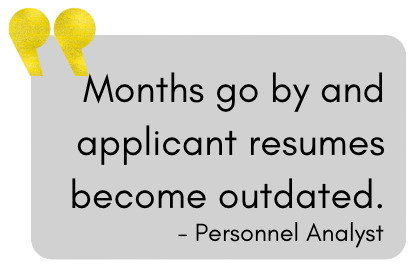Hiring in Half the Time
- Lauren Dodge

- Jun 25
- 3 min read
Updated: Jun 27


Ineffective hiring compromises city services

In 2022, the City of San Diego faced growing concern about their vacancy rate and time to hire.
Classified hiring took on average over 9 months and nearly 1/5 of vacant positions remained unfilled for more than 14 months. To address this, the City sought to streamline hiring, improve the experience for staff and applicants, and strengthen its position as an employer of choice.
Slow hiring hurts the citizens and the employees:
The San Diego Police Department (SDPD) has consistently exceeded its overtime budget in 10 of the last 11 years.
The San Diego Fire-Rescue Department has faced staffing shortages, impacting its ability to respond promptly to emergencies.
Staffing vacancies in the Parks and Recreation Department have resulted in delayed maintenance of public spaces and reductions in community programs.

Critical San Diego City services were suffering, but the root cause was hiring: It's hard to blame the police for poor response times when the vacancy rate is 12% and it takes a year to hire a cop.

What They Did
In partnership with the Office of the Mayor, Human Resources, and the Personnel Department, a 16-member interdisciplinary improvement team spent one year working with PPI to identify and eliminate obstacles to faster hiring in the City of San Diego, California. Personnel staff and department managers mapped the existing classified hiring process and identified key pain points. From these sessions, they proposed immediate process improvements and designed implementation plans for six departments to test and refine the changes.
Innovation Highlights
The San Diego improvement team found solutions that could be implemented immediately to create significant time savings across the hiring process. These included:

1. Initiate hiring NOW
The team found that most hires weren’t even initiated for three months after a vacancy – mostly they fell through the cracks. By holding bi-weekly coordination meetings and empowering Personnel to initiate the hire, San Diego cut the time from vacancy to hiring initiation from 109 days to just 14. It's a simple, measurable change with major impact
2. Candidate eligibility to background check in 60% less time

The team reassigned hiring tasks based on skill sets: for example, Personnel analysts scheduling interviews and hiring managers conducting them. This realignment improved efficiency, reduced workload, and increased staff satisfaction. As a result, the time from candidate eligibility to background check dropped from over 100 days to just 40.
3. Higher quality candidate lists

San Diego adopted a policy to close outdated eligible lists and prevent future backlog. Long-reused lists were filled with “zombies”—candidates no longer eligible or interested yet still reviewed by hiring managers. Clearing these lists reduced hiring time and workload for managers who could focus on only the best candidates. By May 2025, they took a backlog of over 1,000 outdated certification lists to essentially zero.

4. Fewer questions, better candidates
The purpose of an application is to identify qualified candidates, but San Diego's 40+ supplemental questions made the process too burdensome—causing strong candidates to drop off. Union reps echoed this concern. Today, 90% of applications have fewer than 14 questions, resulting in a 20% increase in qualified applicants.

Results
The new process will take 154 fewer days than the 2024 process, freeing up staff time and getting more quality candidates into City of San Diego positions.

Outcomes

Click below for a downloadable version of the case study:





Comments